Easy Dragon Fruit Agua Fresca Recipe (Pitahaya Agua Fresca)
Get your taste buds ready for this simple, refreshing and delicious dragon fruit agua fresca recipe. Make your own hydrating and healthy pitahaya agua fresca to keep cool all spring and summer long with this exotic Mexican drink!
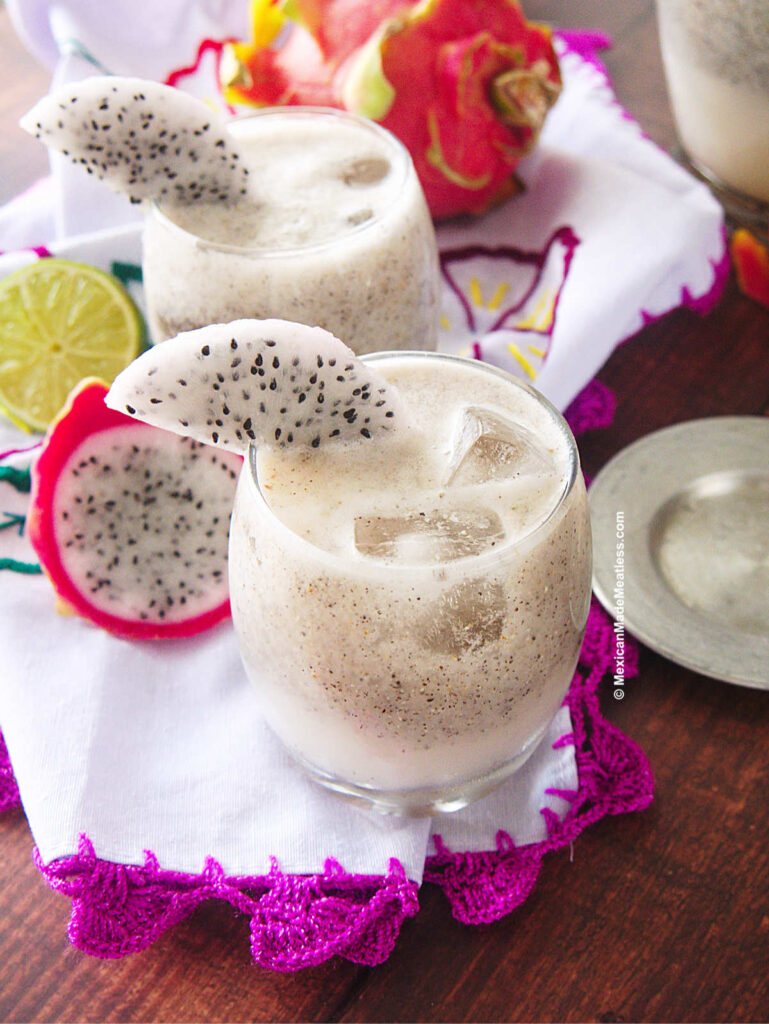
Dragon Fruit or Pitahaya
Dragon fruit, also known as pitahaya in Mexico, is a tropical fruit that’s very popular in Mexico and has now started being discovered in many parts of the world.
Did you know dragon fruit (or pitahaya) are native to Mexico and parts of Central America, but also hugely popular in some Asian cuisines?
Find out more below in the “Fun Facts” section.
Thanks to its unique, sweet and mild taste, and nutritional health benefits, dragon fruit is definitely something to add to your diet.
You can enjoy it as a snack on its own, or with some Tajin sprinkled over it. It’s also delicious in juices, smoothies and, of course agua fresca.
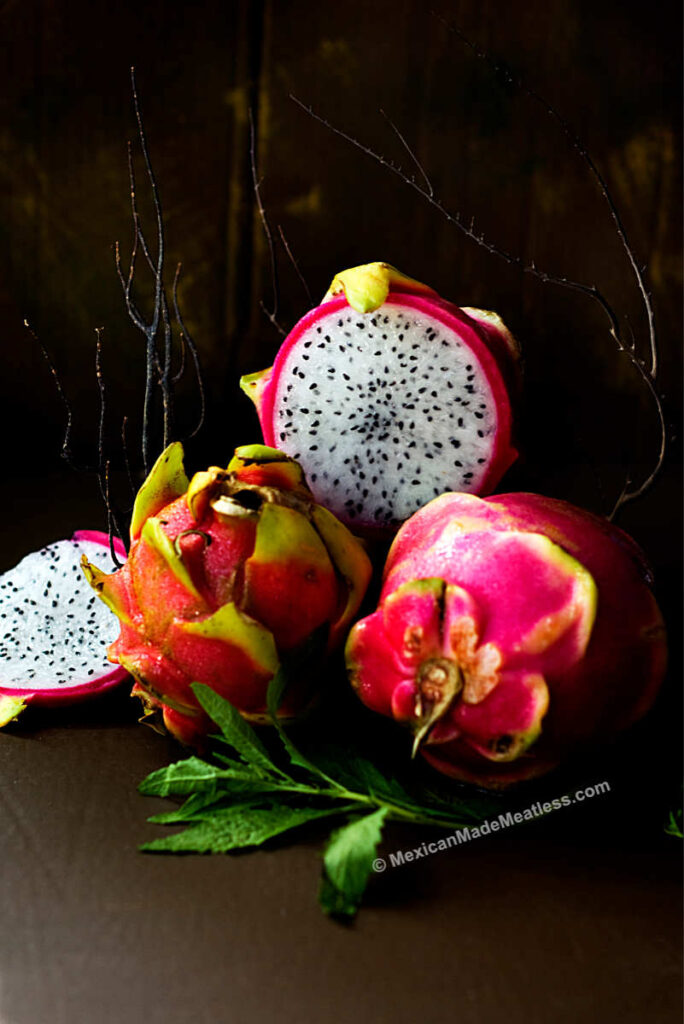
14 Fun Facts and Health Benefits of Dragon Fruit
In Mexico, dragon fruit has long been celebrated for not only it’s refreshing taste, but also for all the health benefits. Here’s some fun facts about this bright pink fruit.
• Dragon fruit are also known as pitahayas, strawberry pear or nanettika fruit.
• Did you know they grow on cactus? These fruits grow on the Hylocereus cactus trees. They have white flowers that bloom only at night: “Pitahaya’s bloom only at night, and only last one night where pollination is necessary to set fruit.”
• Pitahaya and pitaya are not the same fruit. Though both are cacti fruit, in Mexico pitahaya referrers to dragon fruit and pitaya refers to prickly pears or tunas is another name.
• The cacti that produce pitahayas is originally native to Mexico. Sometime in history they began spreading across Central American. The Europeans then transplanted it to other areas of the world: The French introduced them to Vietnam, the Dutch to Taiwan. Currently pitahayas are grown in Mexico, Central America, Australia, Israel, China, Cyprus, America and countless East and Southeast Asian countries.
• There 3 dragon fruit colors. There are white-fleshed pitahaya fruits with pink peel. There are the red flesh colored ones. Then there’s the yellow skin color with white inner flesh. Out of the three, the white-fleshed variety is the most common.
• Unlike the vibrant outer colors, the three dragon fruit colors all have very tame flavors and scents.
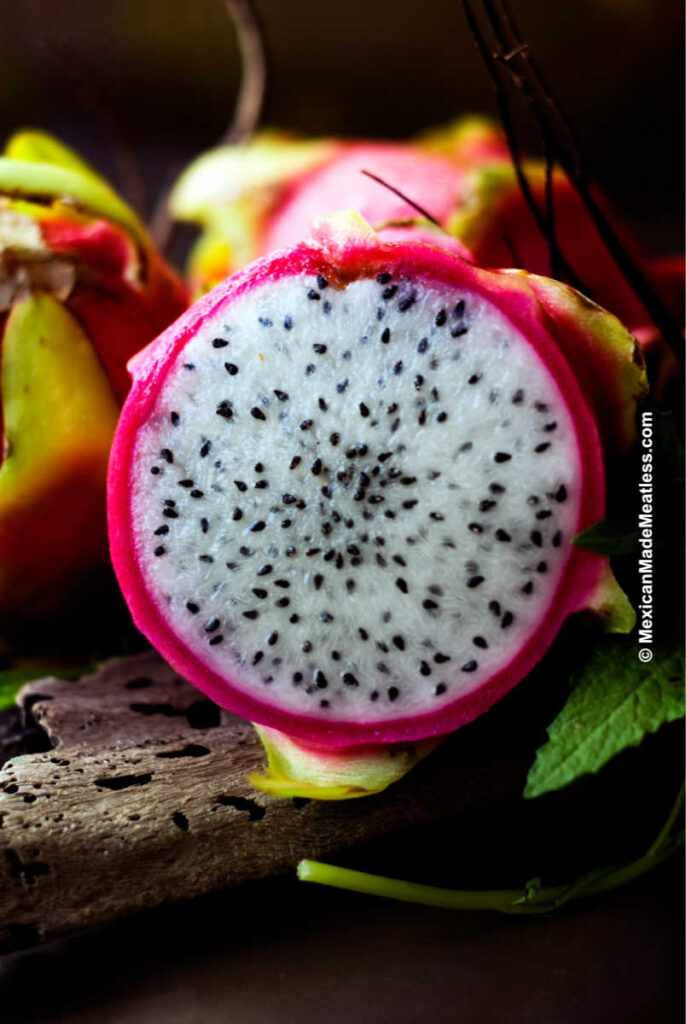
• Dragon fruits are oval in shape and when cut open resemble a kiwi.
•They can weigh anywhere from 150-600gms (or 5.9 – 21oz.) but have also reached a weight of one kilo or 2.2 pounds.
• The skin is edible, some people make tea with it, but others say it can cause uncomfortable intestinal problems for some people. Others swear by the edible dragon fruit skin and it’s health benefits.
• Pitahayas are low in calories and a good source of Vitamins C, B1, B2, and B3, and a good source of iron, calcium, phosphorus, magnesium, antioxidants and fiber.
• Dragon fruit is an anti inflammatory fruit that is good for your cholesterol, heart, to regulate blood sugar (beneficial for diabetes and hypoglycemia patients).
• It’s believed to be great for skin “giving you glowing skin”.
• Some say dragon fruit can help in weight management. Plus its high water content will help keep you hydrated and full.
• Dragon fruit is available year-round in most places. You can purchase it from Mexican, Latin or Asian food markets.
• Dragon fruit or pitahaya can be eaten on it’s own, mixed with other fruits for a sweet or spicy fruit salad, or a smoothie or juice. You can also make salsa with it and agua fresca.
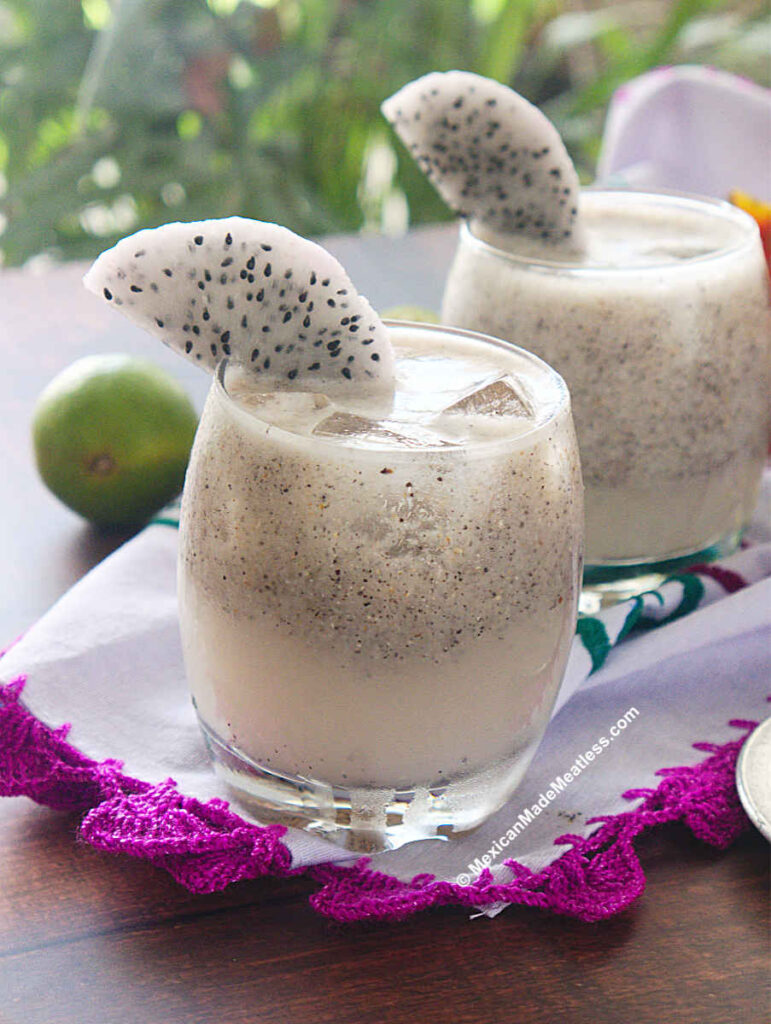
Dragon Fruit Agua Fresca
Amigos, I’m so excited to share with you my pitahaya agua fresca.
I love this refreshing and healthy drink, specially on one of the hot days here in Southern Mexico when quenching my thirst is a must!
This dragon fruit agua fresca recipe is not only delicious, but also vegan-friendly — it’s really just perfect for everyone.
What is Agua Fresca
For those not familiar with agua fresca, it’s a Mexican beverage that translates to “freshwater.” Typically they’re made with a combination of fruit, water, sugar or a sweetener, and lime juice.
There are also ones made with edible flowers, nuts, and seeds.
In Mexico there’s nothing like an agua frescas to feel refreshed and hydrated during hot summer days.
Dragon fruit agua fresca or pitahaya agua fresca is just another popular variation of the many different fruit flavors of agua fresca.
- Watermelon Agua Fresca
- Agua de Piña
- Agua de Jamaica | Hibiscus Tea
- Easy Papaya Agua Fresca with Orange Juice
- Blackberry Mint Agua Fresca
- Prickly Pear and Coconut Agua Fresca
- White Cucumber Agua Fresca
- Chocolate Frio
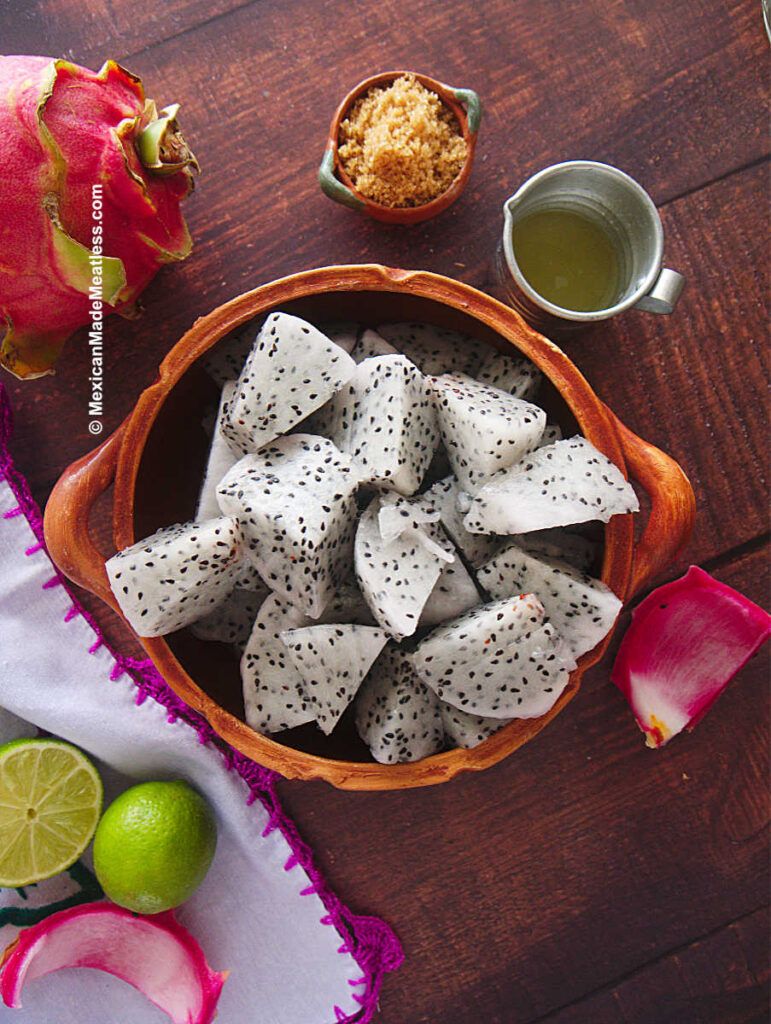
Ingredients
When making agua fresca you’re going to love the short ingredients lists. Additionally they are usually seasonally based fruits or ingredients easy to find. Here’s what you’ll need for dragon fruit agua fresca.
- dragon fruit or pitahaya (you can use any color you’d like)
- freshly squeezed lime juice
- muscovado sugar
- cold water
Variations
When using the white colored dragon fruit, some people like to add a little bit of beet juice or a small piece of beet to give it that bright pink color.
You can omit the lime juice if desired.
Instead of sugar you could use agave syrup.
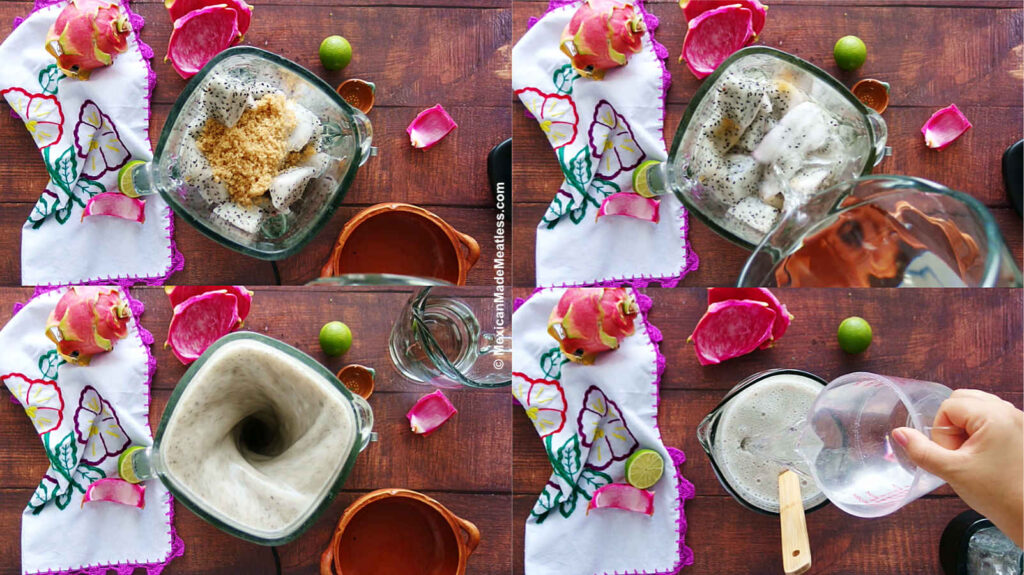
How to Make Dragon Fruit Agua Fresca
Another amazing thing about agua frescas is that they are so incredibly easy to make.
- Peel and chop the pitahaya. Follow these instructions if you don’t know how.
- Place the dragon fruit pieces in the blender along with the lime juice, sugar and half the water.
- Blend until perfectly smooth.
- Pour into a large pitcher or you can also use a fine sieve to strain.
- Pour in the remaining cold water. Taste and adjust the lime or sugar if desired.
- Serve over ice cubes and stir before serving.
You can also add more water to thin it out more, if you’d like. I like it more concentrated.
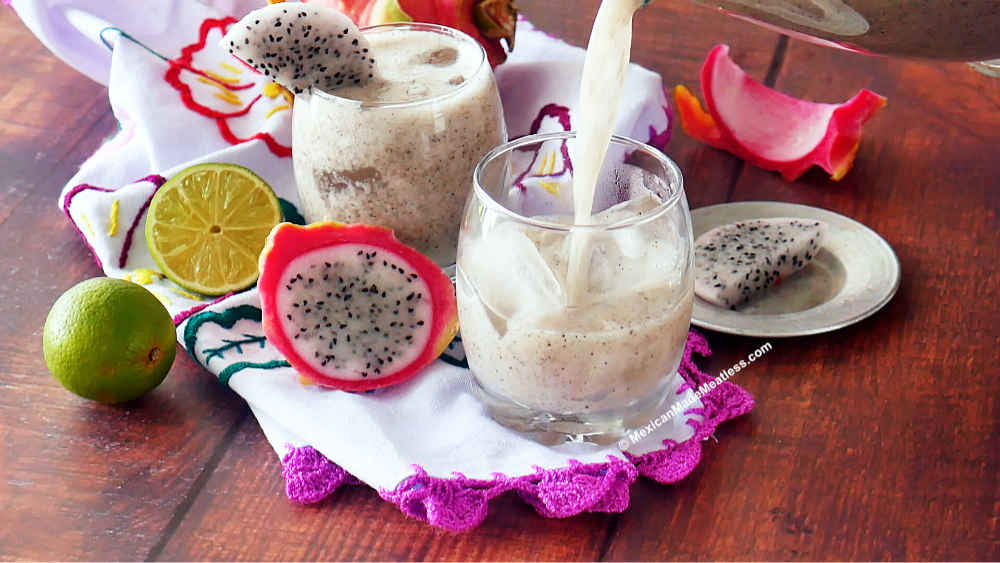
How to Store
You can also store it in the refrigerator until ready to serve. Just give it a good stir because the seeds tend to float to the top.
This agua fresca will keep fresh for about a day. If you won’t be drinking leftovers straight away you can always freeze it or make water-based paletas with the leftovers.
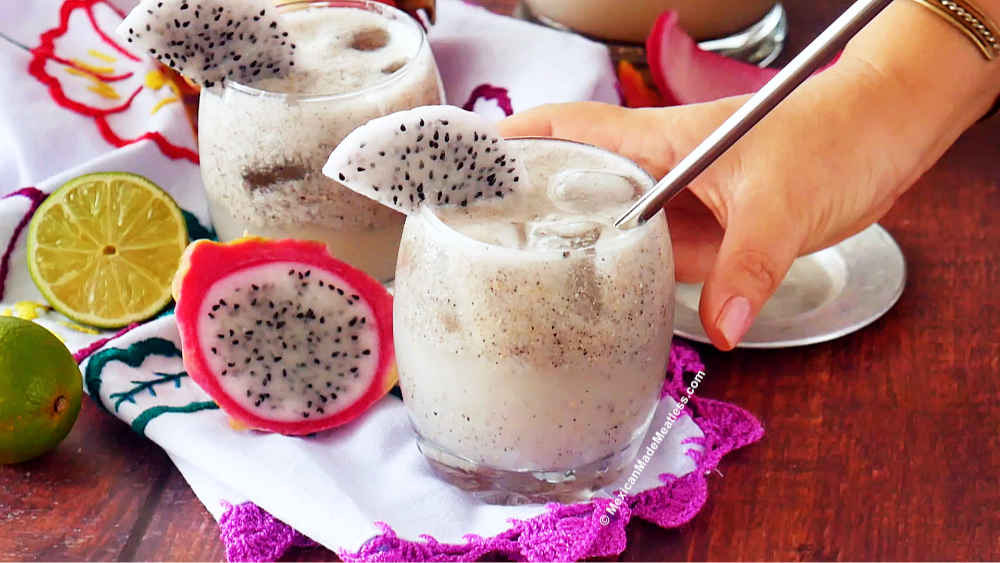
What Does Dragon Fruit Agua Fresca Taste Like?
This tropical drink has tones of limes and sweet hints of the pitahaya — the flavors compliment each other so well.
Perhaps next time I’ll use a mix of coconut water and see what happens.
It may not be an explosion of flavors but it was a very satisfying and refreshing drink. On scorching summer days this is exactly the type of drink one needs.
Salud!
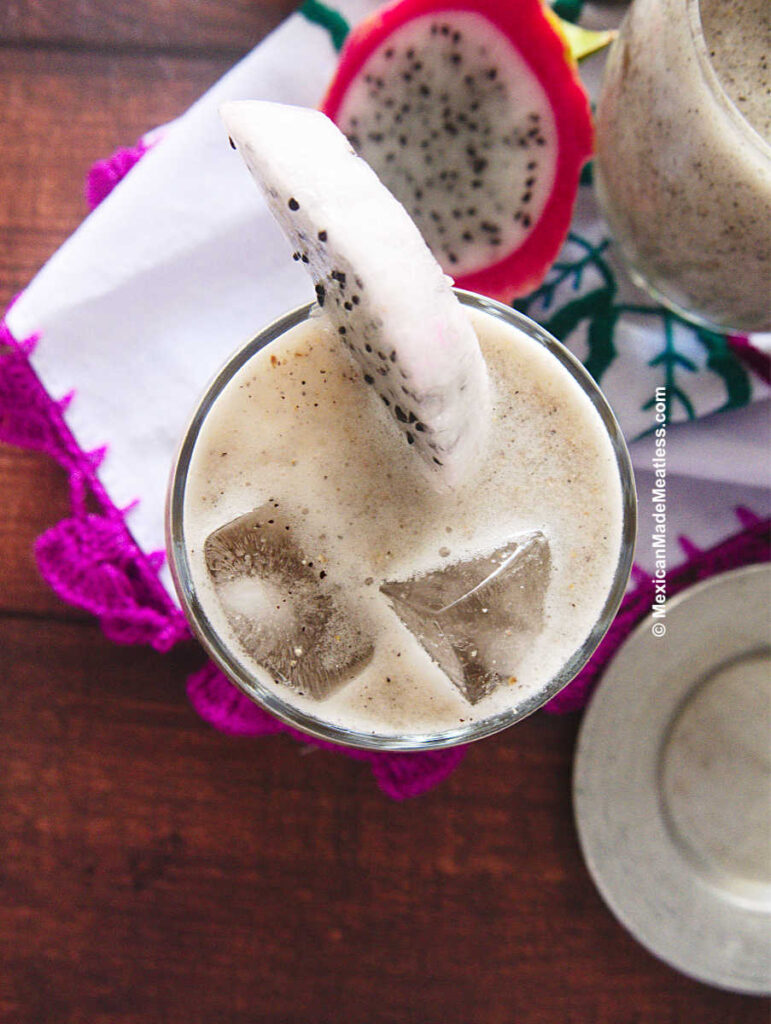
Dragon Fruit Agua Fresca Recipe (Pitahaya Agua Fresca)
Video
Ingredients
- 2 medium dragon fruits or pitahayas any color, peeled and chopped
- 4 cups cold filtered water adjust to taste
- 1 medium lime adjust less or more depending on taste and how sweet or tart the pitahaya is
- 4 Tablespoons Muscovado sugar adjust depending on how sweet pitahaya is
- ice cubes to taste
Instructions
- Peel and chop the pitahaya. Follow these instructions if you don’t know how.
- Place the dragon fruit pieces in the blender along with the lime juice, sugar and half the water.Blend until perfectly smooth.Pour into a large pitcher or you can also use a fine sieve to strain.Pour in the remaining cold water. Taste and adjust the lime or sugar if desired.
- Serve over ice cubes and stir before serving.
Notes
Variations
When using the white colored dragon fruit, some people like to add a little bit of beet juice or a small piece of beet to give it that bright pink color. You can omit the lime juice if desired. Instead of sugar you could use agave syrup.Nutrition
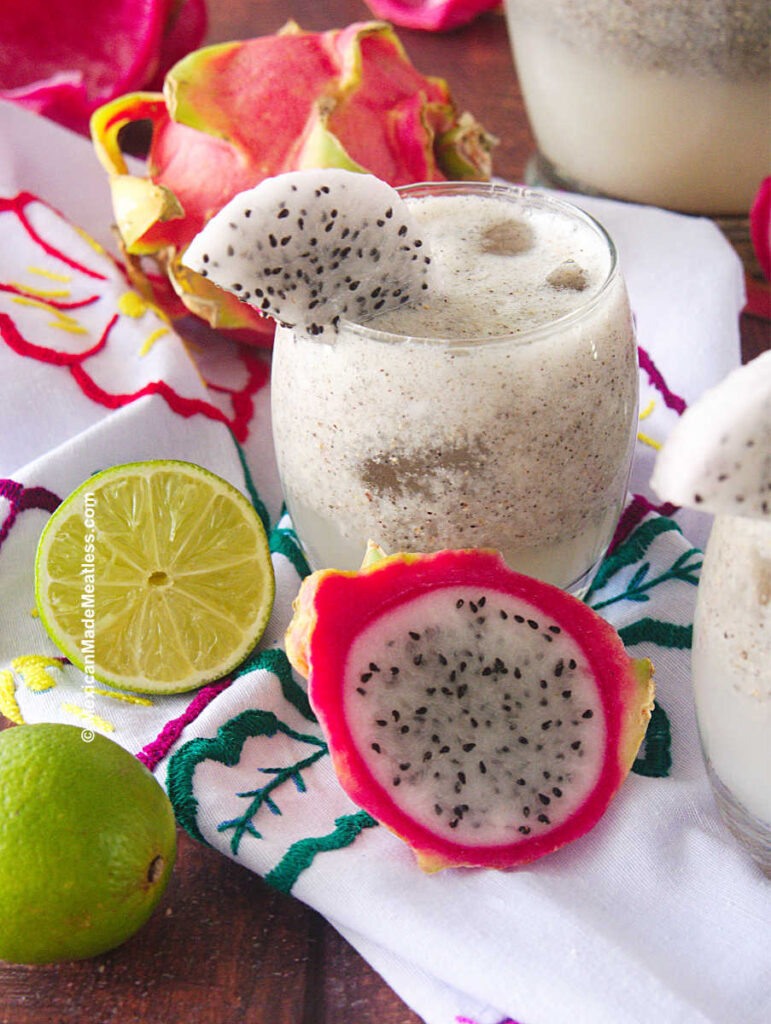
FAQ
Is dragon fruit agua fresca vegan?
Yes, this recipe is completely vegan because it contains no animal products — make sure you’re using unrefined sugar.
Can I use frozen dragon fruit for this recipe?
Yes, you can use frozen dragon fruit instead of fresh. Just make sure to thaw it before blending. Use 3 heaping cups.
How long does dragon fruit agua fresca last?
Dragon fruit agua fresca is best served rightaway and fresh. It can be stored in the refrigerator for maximum of 2 days before the taste starts going off.
Can I add alcohol to dragon fruit agua fresca?
Yes, you can add alcohol to this recipe if you like and make a skinny margarita. Tequila blanco or even vodka would be a good choices for a cocktail version. You could even add ice or use frozen dragon fruit and make it more like a frozen drink.
Nancy Lopez is a food blogger and author of the cookbook Mexican Tamales Made Meatless. Born in Mexico, raised in the US, and currently living in Southern Mexico, she has followed a meatless diet for almost 10 years. It is her passion and mission to share all she has learned about vegan Mexican cooking and vegetarian Mexican recipes. Mexican Made Meatless is a blog dedicated to preserving the authentic flavors of Mexican cuisine just without the meat. It’s a place to celebrate Mexican culture and all it’s delightfully delicious traditional foods. Read more…

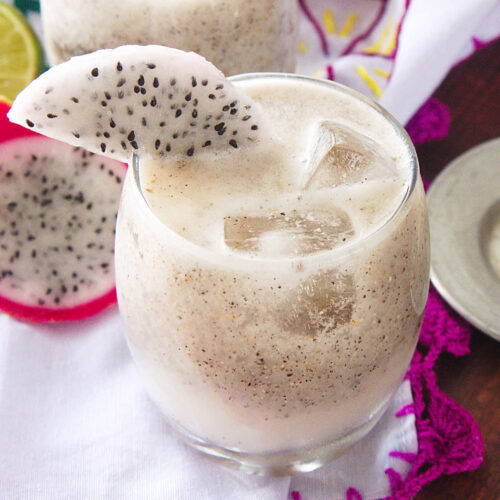
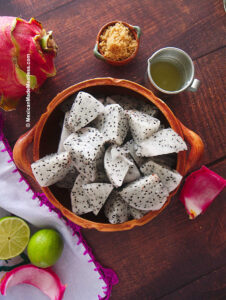

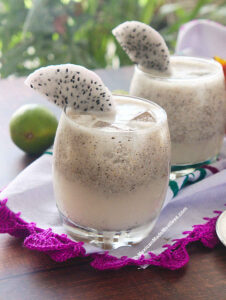
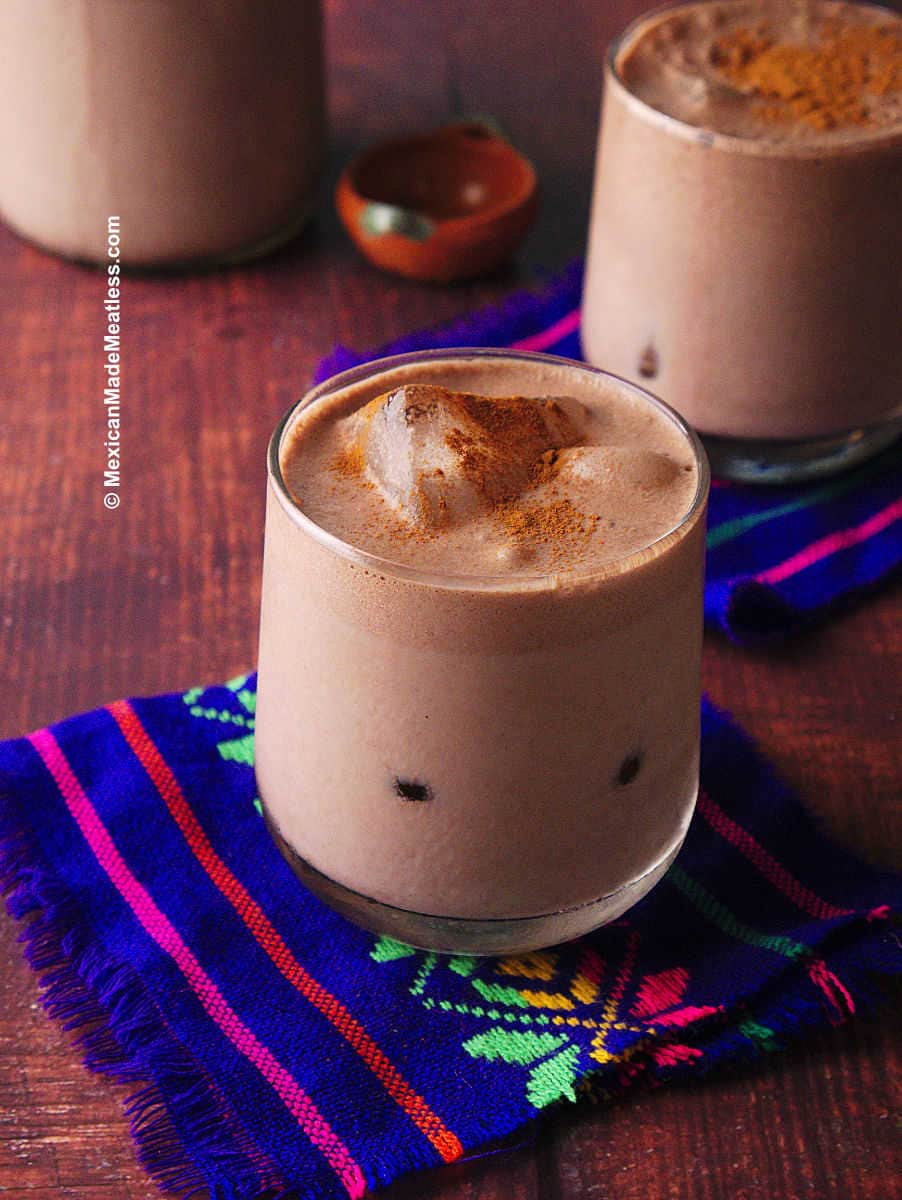
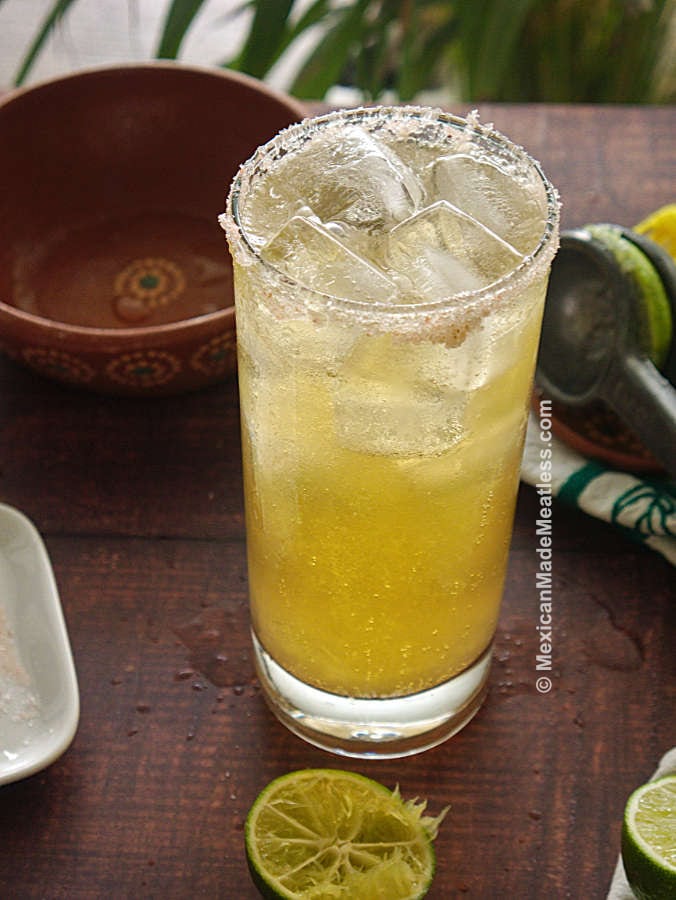
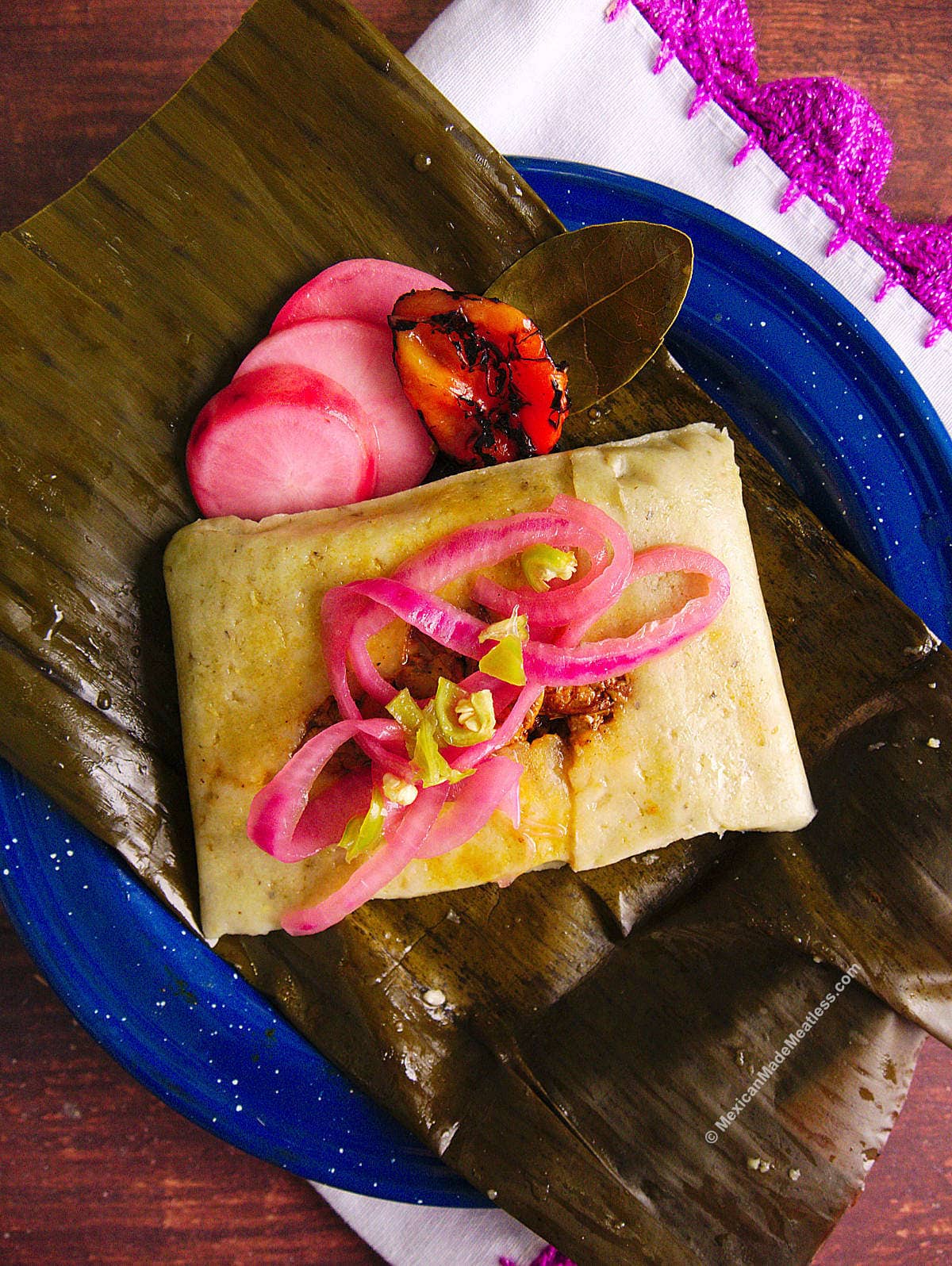
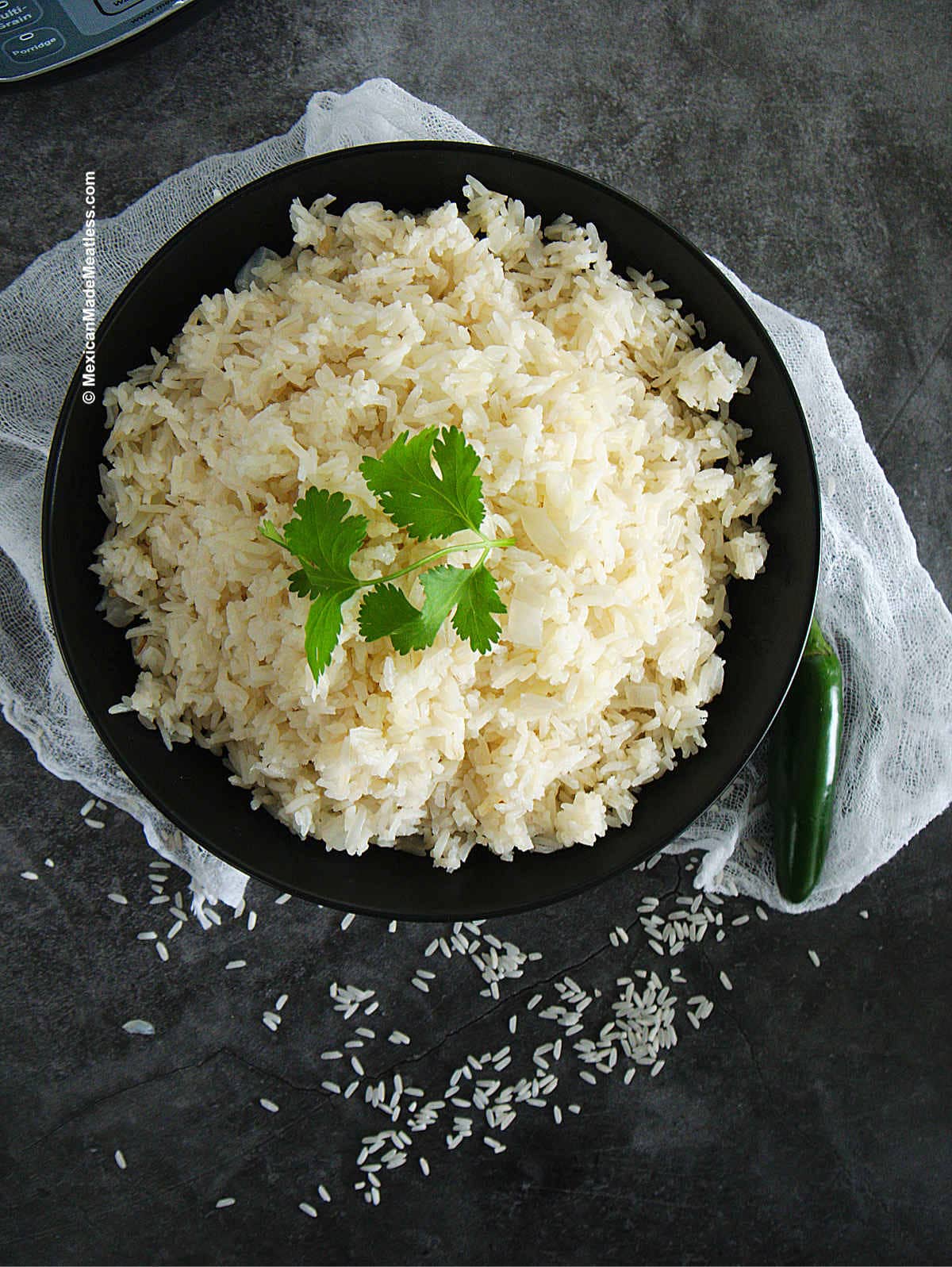

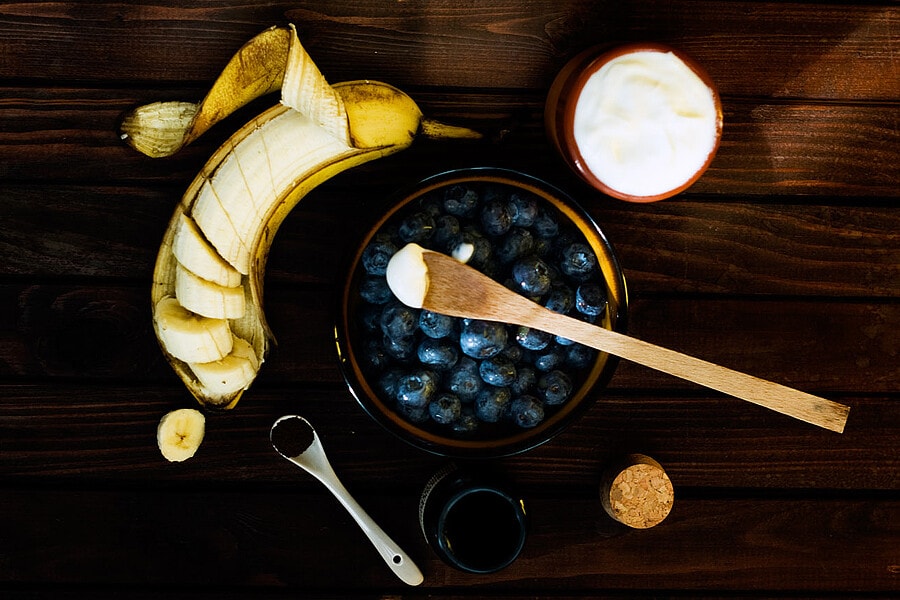
Thanks for this post Nancy. The fruit and vegetable stand in Los Barriles BCS is named Pitahaya. I am there in the winter and have never seen one. I will be on the lookout next time I am in the mainland. Is October too late in the season?
Hi Letty! I’ve found them almost year-round in Europe but I believe those were imported from Asia. I’m not 100% about finding them in BC during the late autumn/early winter. We moved to QR last November and I didn’t see them here until a couple of weeks ago, but where I live has no farmland and much of the fruits & vegetables are brought in. Anyway, Baja California is a pitahaya producing area and you might get lucky — they grow the yellow varieties too! Good luck 🙂
This sounds so good! Pitahaya is so beautiful, looks like it’s from a different planet altogether.
So vibrant pictures beautiful…
Loved this post Nancy!!! Never knew these facts about the dragon fruit!! Thanks for sharing all the information and the splendid pictures 🙂
I’ve always been tempted to buy some of these but ever knew how to cut them much less what to do with them. So thank you for taking care of both of the unknowns. 🙂 It’s such a beautiful fruit and no, I did not know that it was a cactus fruit. Thanks for this post Nancy!
Hmm – not something I am likely to find out here in the middle nowhere! Maybe one day when I am visiting a more populated are, I will get to try it 😉 Lovely photos, as always!
I was just telling my son over the weekend that I wanted to try this. After seeing these pictures I’m more anxious than ever to see what it tastes like!
Great idea! I recently discovered dragon fruit at a local Asian supermarket and I just had to try it. Love the idea of using it to make a beautiful chilled summer drink.
I never knew pitahayas were originally native to Mexico! Gorgeous stuff — I love the way they look. And taste. Super post — thanks.
This really looks delicious. its perfect for my kids, they will surely love this.thank you for sharing this recipe. quick and easy!
I love dragon fruit, can’t wait to try this recipe!
I hope you enjoy it, so refreshing!
Really tasty!!
Thanks Helen!
Sounds like a delicious recipe. Thank you for sharing.
Thank you Andrea!
Super refreshing and the step by step instructions were so helpful!
Thank you Audrey!
This is such a gorgeous drink and it looks so easy to make!
It’s great for a party. Thanks Amy!
So refreshing, we all loved it, thank you for sharing
Thank you Giangi!